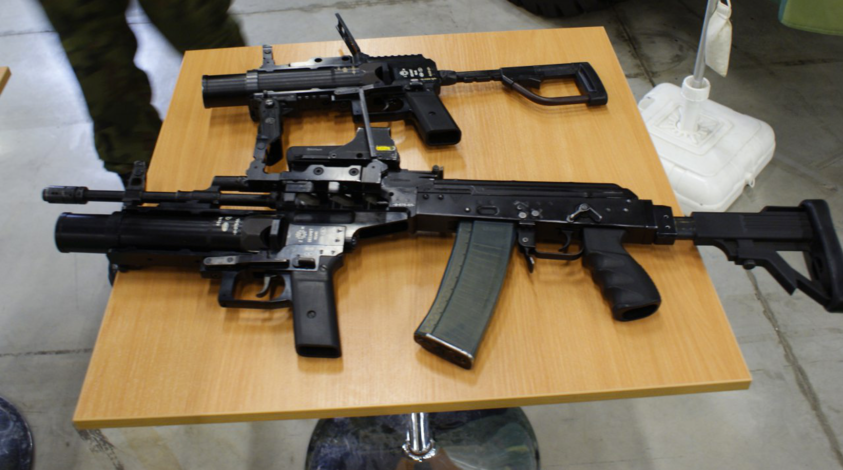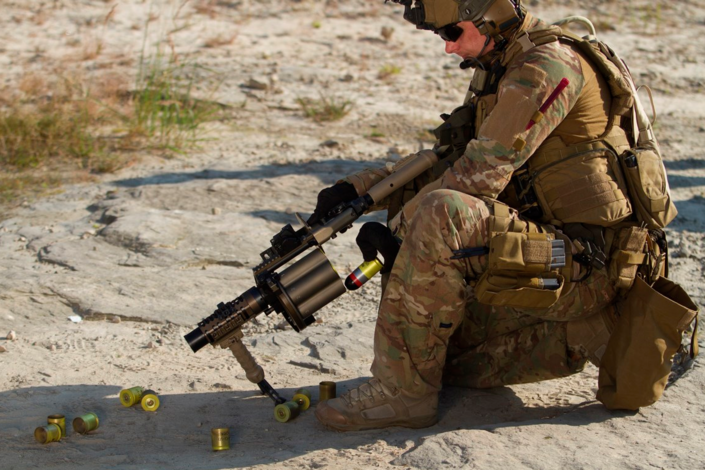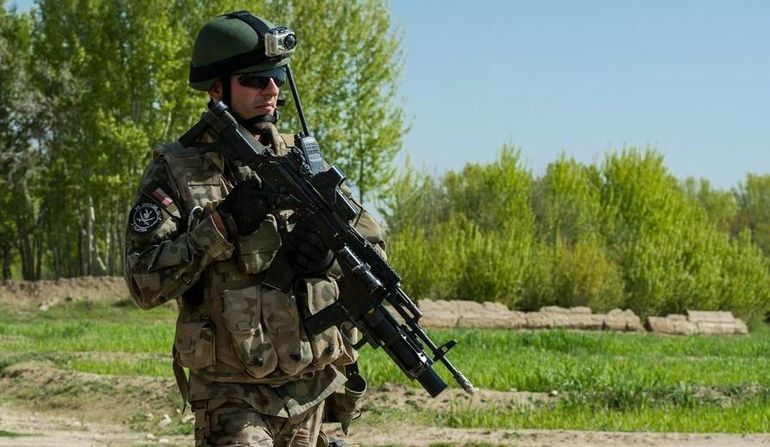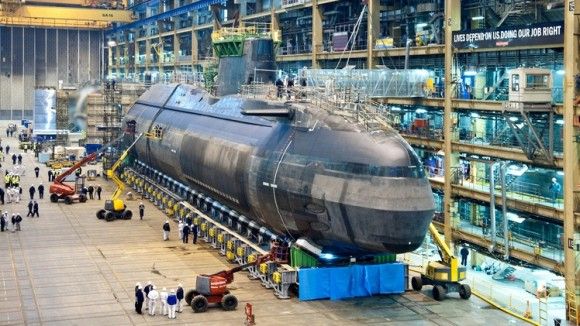“40 mm Pocket Artillery” Offered by the Polish Armaments Group
Polish Armaments Group, together with its subsidiary companies, is offering a system of 40 mm grenade launchers, destined to be operated by the Armed Forces, Police, Border Authorities or by the Prison Guards. Several models of this weaponry, and ammunition designed for a myriad of purposes, have been created.
Light 40 mm grenade launchers are a popular type of weaponry nowadays, allowing the user to be in possession of significant firepower, at a range from several to several hundred meters. Their being lightweight makes it easier for the soldiers to use them, moreover, the individual soldier may carry a significant quantity of ammunition, even when operating in rough terrain. The launchers turn out to be very usable, also in the urbanized areas.
Not only is the firepower of critical value in such conditions, as accuracy, variety of available ammo types and mobility are of equal importance. A soldier who is in possession of a grenade launcher may defend himself from an attack, he may also cover his “fall back” (with the use of e.g. smoke grenades), or provide support in offensive operations. Ability to act against machine gun positions or other heavy stations, located even several hundred meters away – much further than within the hand grenade range – also bears a significant degree of relevance.
Polish Armaments Group has a cohesive potential within the scope of the 40 mm grenade launchers established, achieved through coordination of works between Dezamet and ZM Tarnów companies. The established system is compliant with the NATO standards.
High and low pressure ammunition is being currently manufactured by the Dezamet company, including programmable grenades. The company also offers single-shot grenade launchers, utilized by the Polish Army. ZM Tarnów is, on the other hand, a manufacturer of the repeater-revolver grenade launcher which has been ordered by the Polish Armed Forces back in 2016.
Modular Pocket Artillery
Dezamet facility of Nowa Dęba has been developing the offer of 40 mm grenades and grenade launchers for more than a decade now, meeting the needs of the Polish Army and of the foreign customers as well. Back in 2005, Dezamet, working together with the Military University of Technology, began development works concerning the SBAO-40 weapons family (System Broni i Amunicji Obezwładniającej Kalibru 40 mm – 40 mm Non-Lethal Ammunition and Weapons System), within the framework of the 255/BO/B research initiative, co-financed by the Ministry of Science and Higher Education.
SBAO-40 weapons family, utilizing the 40×46 mm ammunition, includes the GSBO-40 stand-alone grenade launcher and GPBO-40 underslung weapon. The latter one may be coupled both with the standard Polish Beryl wz. 96 5.56 mm assault rifle, as well as with the post-soviet AKM/AKMS 7.62 mm designs.
Both variants are of modular design, which facilitates the operational use, potential repairs or reconfiguration from the stand-alone (featuring a grip and a stock) into the under-barrel variant. It is also possible to tailor the weapon for left hand use.

SBAO-40 weapon consists of the following modules: barrel, trigger, stock (in case of the stand-alone variant) and iron sight. In case of the GBPO-40 version, the launcher consists of the barrel module, intermediate element mounted on the rifle instead of the standard handguard, along with a trigger module and sight.
In case of the GSBO-40 variant, the barrel module features a top-mounted iron sight and a universal mounting rail, along with a pistol-gripped trigger module, front grip and a folding stock. The weapon features a barrel with a length of 250 mm, and thanks to the fact that it is folded towards the side when the launcher is being loaded, non-standard length grenades may also be used with the said system. The theoretical rate of fire is defined as 5 to 7 rounds per minute, while the effective range exceeds the distance of 300 meters. The weight of the underslunng version is 1.9 kilograms, while the stand-alone variant weighs 2.35 kg.
GSBO-40 and GPBO-40 launchers are currently being used by the Polish Army, and have seen combat use, e.g. in Afghanistan. The underslung type may also be integrated with the MSBS firearms.
Concept Development - Repeater
On the basis of the experience gathered during the foreign deployments, especially in Iraq and Afghanistan, the Polish soldiers have been able to confirm the fact that a single-shot grenade launcher is a useful weapon, especially in the urbanized areas. However, low rate of fire remains one of the primary disadvantages of such systems.
During the Iraqi operations, the Poles had a chance of getting acquainted with the Milkor MGM-140 launchers, also known as M32 in the US Armed Forces. Utilizing a similar variety of munitions, these launchers offer a much greater firepower, when compared with the single shot variants.
Within the time required to empty the six rounds drum of the launcher, the fire coverage area of which is as vast as 600 square meters, the user of the single-shot system would be able to take one or two shots. In case of the drum-fed weapon, there are no limitations when it comes to using ammunition of varied lengths, unless the round parameters are contained within the limitations of the round chamber.
In Poland, the works on a multiple-shot grenade launcher have been initiated back in the 1980s. However, during the said period, the Army was not interested in acquiring such weaponry. A certain number of RGA-89 Lazuryt 26 mm revolver-type multiple grenade launchers has been used by the Police (also referred to as revolver shotguns). The said weapon has been developed by the Military University of Technology of Warsaw.
Only after the Polish Army began to get involved in foreign deployments, a need has emerged to equip the soldiers at the element level with equipment of this kind. Thus, during the year 2007, Tarnów based Ośrodek Badawczo-Rozwojowy Sprzętu Mechanicznego Sp. z o.o. [Mechanical Equipment R&D Centre], collaborating with the Armament Technology Institute of the Faculty of Mechatronics of the Military University of Technology, has begun works related to development of a weapon which was to meet the requirements of the No. 317/BO/B project, also known under the name of “Hand-held Repeating 40×46 mm Grenade Launcher (RGP-40)”.
Back in 2010, a sample lot of the launchers has been manufactured, along with the auxiliary equipment. Documentation of the series production was being developed. RGP-40 weapon has successfully gone through the required tests and research, and in February 2016, a contract has been concluded by and between the ZM Tarnów facility and the Armament Inspectorate, covering the procurement of the first 200 examples for the Polish Army.

RGP-40 is a semi automatic weapon, fed from a rotating drum magazine holding 6 rounds. The spring-loaded rotating mechanism of the drum is being tensioned during the process of loading the weapon. During the loading procedure, the rear part of the weapon, along with the stock and pistol grip, is tilted to the right. This makes it possible to use any rounds compliant with the NATO 40×46SR standard, with their length being limited solely with the 140 mm length of the ammo drum chambers.
RGP-40 may be used to shoot 2 thousand grenades, without any deterioration of its parameters. The practical achievable rate of fire is defined as 12 shots per minute. When ammunition with muzzle speed of up to 82 meters per second is used, the effective range of fire is defined as 400 meters. However, the weapon’s design also makes it possible to utilize rounds of much higher muzzle energy, with doubled range (medium velocity grenades).
RGP-40 launcher has been fitted with four Picatinny rails that may be used to accessorize the weapon. The main, top rail, is destined to host sighting system, e.g. in a form of the GLS-203 reflector sight which, currently, is the primary sight system dedicated for this weapon. The remaining three rails have been placed on the handguard.
The lower one is dedicated to be a mounting point for a front grip. GripPod is the most commonly used solution within that role, fusing the abilities of a vertical grip and a foldable bipod. The bipod enhances the accuracy, when supported on the ground or the cover, such as the wall or sandbags. The grenade launcher also features a stock which has been placed right in the axis of the barrel, which has a beneficial impact on accuracy of the weapon.

In order to use the grenade launchers in an effective manner, proper ammunition needs to be made available. Dezamet facility offers a myriad of 40 mm rounds, compliant with the NATO standard, developed within the framework of the SBAO-40 system, and later. Not only may the grenades in question be used with the Polish systems, as they are also compatible with any other type using the standard 40×46 mm SR grenades, such as M203 or AG46.
In case of the combat ammunition NGO-N1 self-destructing frag grenades form the core of the offer (the older NGO-N model had no option as such at its disposal, which created a risk of unexploded ordnance remaining on the battlefield). They act against the enemy with pre-fragmented elements, in a radius of 5 meters from the place of detonation. HEDP-40 high-explosive shaped rounds, as well as thermobaric NGTB grenades are also in development right now.
Special-purpose rounds are also available. These include NGZ-N tactical incendiary rounds, smoke rounds of two types (standard NGD-N and fragmentation NGDR-N round), as well as NGOS-N illuminating grenade.
A separate group is formed by the non-lethal grenades dedicated for the Police, Military Police, Prison Guards and other Uniformed Services. This type of ammo includes single rubber projectile NGPG-N non-lethal rounds, as well as NGK-N rounds with 25 rubber BBs. NGHB-N flashbangs have also been developed, with CS gas NGG-N munitions being developed right now.
Training rounds form yet another group, including NGT-N1 training rounds, NGB-N1 training rounds with a ballistic projectile, NGC-N blank cartridges and NGC1-40 training rounds, as well as training rounds with an orange marker - NGM1-40, which are complemented with their tracer variants: NGC2-40 and NGM2-40.
40 mm grenade launcher ammunition systems offered by Dezamet face constant development, which is well exemplified by thermobaric and tear-gas rounds that are currently at the development stage. Thanks to the technology acquired from abroad, it is also possible to pursue more advanced projects, including ones the aim of which would be to develop airburst grenades, with programmable distance of detonation.
Dezamet has acquired Nammo NGKO-RF radio-programmed airburst ammunition production technology from the Norway-based manufacturer. This round is dedicated to be used with the automatic systems, however utilizing similar solutions in case of hand-held weaponry cannot be ruled out.
Thanks to the collaboration between ZM Tarnów and Dezamet, and to cooperation with the foreign customers, the Polish Armaments Group has established a relevant potential in the field of light grenade launchers and 40 mm grenades. Single shot SBAO-40 and multiple RGP-40 grenade launchers are dedicated for being used by military units, including the military police, as well as by police, counter-terrorism units, border authorities or by the prison guards. Besides the combat ammunition, rounds that enable the user to pacify aggressively behaving animals or people are also being offered. They make it possible to neutralize the threat in a non-lethal manner. The grenades may also be used to get rid of obstacles, doors, window-frames, or for the purpose of creating smoke-screens.







